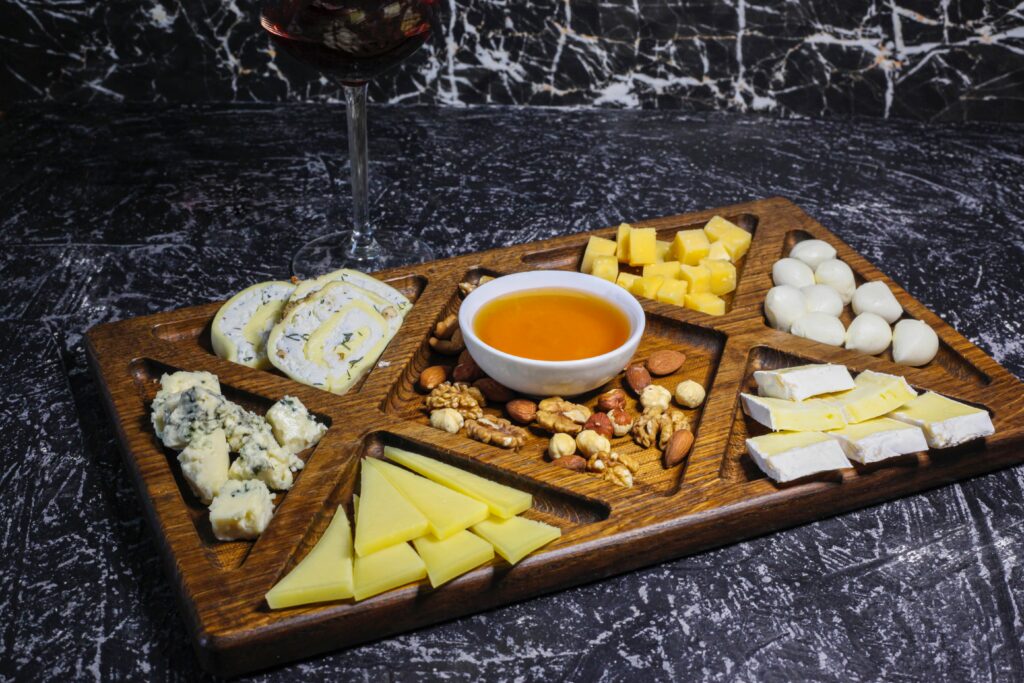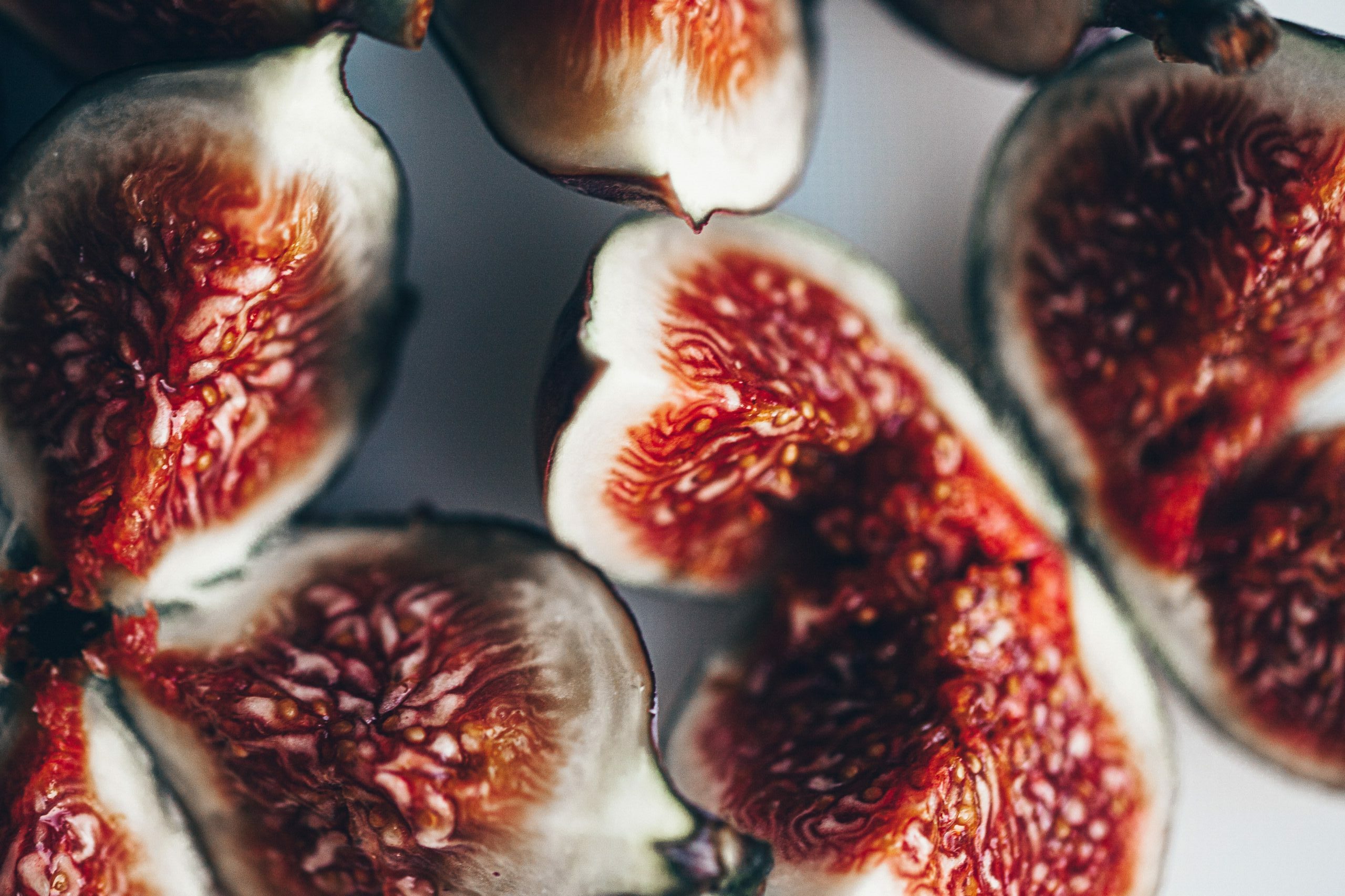How To Cut Cheese For A Charcuterie Board

Charcuterie boards are the one thing that has become synonymous with every get-together or house party. These boards have something for everyone, from meats to cheese wedges, crackers, assorted vegetables, fruits, nuts, and dried fruit.
When it comes to making an aesthetic and delicious charcuterie board, the trickiest part is learning how to cut the cheese, and display them nicely. Let’s learn how to cut cheese for a charcuterie board with a few simple steps.
Are you struggling with cutting the delicate variety of cheeses for your charcuterie board? Are you wondering how to master the art of slicing cheese? Here’s all you should know about it.

Making A Charcuterie Board: How To Cut Cheese
Once you have gathered the cheese you want to display for your edible masterpiece, and the knives, it’s time to plan for shape and size. Here you want to be mindful of looks, but the consistency of the cheese is essential to maintaining the best texture and flavor. Here are some of the ways to cut cheese for a charcuterie board.
Log Shaped Cheese
Soft cheese often comes in the form of a log and doesn’t necessarily need to be cut.
This variety of cheese is very soft and easy to spread. It is best to serve them as a whole with a soft cheese knife or spreader and allow people to help themselves based on their preferences.
However, if you wish to pre-portion, the ideal way is to slice the log into a few uniform rounds. Use a thin-bladed knife for soft cheese, or try a cheese wire to execute this delicate job. These tools ensure the cheese doesn’t stick to the blade and get crumbly or misshapen.
If you don’t have specialty knives, you can resort to an easy trick: use unflavored and unwaxed dental floss to help you cut soft cheeses. Lay the cheese right on top of the floss exactly at the point that you wish to cut it, and then draw both ends up towards the other in a single, quick motion.
Author’s Note: Find the Best Cutting Board Sizes For Your Charcuterie Board needs
Soft Wheel Cheese
When it comes to small wheels of cheese, cutting them is simple enough. All you have to do is pretend you are cutting a birthday cake.
Start by cutting equal wedges from the wheel’s center to ensure each piece includes the cloudlike center, the delicate rind, and the cream line. This will make each bite of the cheese full of a wide range of flavors and textures.
It is better to opt for a thin-bladed knife or a skeleton knife in order to get the best results. You can also use the same method for square-shaped bloomy and washed rind cheeses.
However, if you’re dealing with cheese that is too gooey or liquid inside and can’t be cut normally, you can use your sharpest knife to cut the top rind as if you are opening a can. Peel the “lid” back, and dip it with a spoon, bread, veggies, or crackers.

Wondering how to cut Brie for charcuterie board? Using a traditional cheese knife will be ideal when it comes to soft cheeses such as Brie. The cheese knives come with short handles and dull blades for slicing through soft, supple cheeses.
Pyramid Shape Cheese
Unique cheeses shaped like pyramids can seem intimidating to cut, but they are simple to handle. Take a skeleton knife, or a sharp thin-bladed cheese knife to cut soft, delicate pyramid-shaped cheeses, ensuring they don’t stick to the blade.
Cut Valençay-style cheeses in even quarters from the top down. After that, lay every quarter flat on the cutting board, and slice through the rind to get thick slices around 1 quarter-inch each. This method will ensure that each piece is uniform with an even ratio of rind-to-paste.
Wedges
Larger wheels of cheese tend to be portioned into wedges, making it simple to cut them. While the skinny end of the cheese wedge contains the center of the cheese wheel, the wide end has the rind, ensuring each piece includes a cross-section.
Pick a hard cheese knife of good quality, like a utility knife, chef’s knife, or skeleton knife, to cut portions of these wedges.
Put down the wedge on any cut sides, then trim the top and bottom rinds. After that, you can cut the wedge to get even triangular slices with the rind on one end.
If you have a very firm and crystalline cheese aged for over a year, you can skip cutting it into slices and serve the wedges as a whole on the charcuterie board, and people can portion it themselves. However, don’t forget to keep a sharp Parmesan knife along with it.
You may also put the wedge on the board and cut the paste yourself while leaving the rind intact so that it frames the cheese pieces.

Cheese Blocks
When people see a cheese block, they often want to cut the cheese into many tiny cubes, like the deli tray style. Unfortunately, this isn’t always the ideal way to cut blocks of cheese.
In order to get more flavor from every piece of cheese you eat, you want to increase its surface area. The best way to achieve this, is to cut thin, wide slices. Cheese cubes reduce the surface that hits the tongue when you pop a piece of cheese into your mouth, so we want to be mindful of the eating experience and increase flavor whenever possible.
Here, you can break down cheese blocks with a skeleton knife, or chef’s knife. Slice a cheese block into planks that are an eighth-inch in thickness, and cut these planks into small rectangles as needed. Alternatively, you can cut the rectangle-shaped slices diagonally in equal halves to create triangles.
With a firm or dry cheese that comes in blocks, it might not be possible to cut smooth slices. In this case, you can use a Parmesan knife or a narrow plane knife to help you break the cheese block into chunks that have a rustic look.

How To Cut Figs For Cheese Board?
You can also use an assortment of fresh fruits on your board, but nothing beats juicy, luscious figs. They have a delicate aroma and sweet flavor, making them ideal for pairing with cheese.
When cutting figs, gently wipe them with a damp cloth, then trim off the hard stem. You can keep the figs whole, or cut them in half using a sharp knife, starting from top to bottom.
If you are aiming for something more aesthetic, you can create a ‘flower’ from fig. Make a cross at the top of the fruit, without cutting all of the way through. After that, squeeze the base of the fig using your fingers, and the four-quarters of the fruit will open out like petals.
Final Thoughts
Cheese is the life of any charcuterie board, so let’s show it some love! Once you learn how to cut cheese for a charcuterie board and arrange them beautifully, you will become the favorite host for every party. Cheers!

I’m the founder and CEO of Yahshi Bakes, a Bay Area-based bakery popup I started in 2015. I grew up in the kitchen as if it were my living room, and I enjoy making delicious food to share with the people I love. I love traveling and exploring the rich flavors of other cultures- from music to curry and everything in between!
